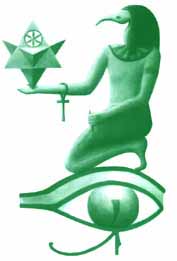aaroncheak | The Lubiczs returned to France in the early 1950s, retiring to Mas du Coucagno at Plan-de-Grasse. In 1952, on the day of St. John the Baptist, Schwaller penned an intriguing text entitled Verbe Nature (Nature Word), perhaps one of his most deeply revealing works.[61] The subtitle of the work is: Quelques réponses de la Nature et de ses Sages aux questions de l’auteur, porte-parole des inconnus (Some responses from Nature and her Sages to the questions of the author, spokesperson of the unknown). Bearing the distinct stamp of Schwaller’s mysterious daimon, the premise of the text is the transcription of a series of answers given by ‘Nature and her sages’ to questions posed, but not recorded, by Schwaller. It is thus composed solely of responses. One of the more important features of the text is the insight it gives into Schwaller’s broader theories of biological and spiritual transmutation. Nature Word makes the startling claim that there is a fixed alchemical salt—an immortal mineral ‘nucleus’ that neither fire nor putrefaction can destroy—residing in the human femur.
With unusual specificity, Schwaller held that the incorruptible salt in the human femur is the mineral ‘register’ upon which the most vital moments of human consciousness could be permanently ‘inscribed’. This salt or nucleus was, in comparison the chromosome, ‘extremely fixed or even indestructible’.[62] Schwaller regarded it as more permanent than DNA and accorded it a key role in his esoteric theory of evolution (genesis). Contrary to the Darwinian theory (where only the characteristics of the species are able to be preserved through genetic transmission), Schwaller maintained that the fixed salt located in the femur is the precise mechanism by which individual characteristics—the vital modes of consciousness—are able to be preserved and transmitted beyond the death of the individual. This salt was therefore central to the alchemical process of rebirth (palingenesis). Within the wider framework of Schwaller’s cosmology—in which material genesis is conceived as the visible index of the evolution of consciousness—the alchemical salt forms the ‘magnet’ that draws primordial matter through the existential vehicles of the mineral, vegetable, animal and human kingdoms towards the ultima materia (or telos) of ‘spiritual concretion’. As such it formed the hidden link—the invisible bond in the chain of continuity—in the otherwise apparently discontinuous process in which the generation and corruption of evolving forms is situated.
In 1956, Schwaller published Le Roi de la théocratie pharaonique (The King of Pharaonic Theocracy), a work which, among other things, traces the deviation and distortion of Egyptian consciousness through Greek rationality, highlighting the Egyptian rather than Greek basis of the intellectual ‘miracle’ than transformed antique civilisation. In this work, Schwaller reveals important insights into the alchemical process of ‘qualitative exaltation’, a term he compares to the occurence of ‘teratological proliferation’ (mutational phenomena) in plants. Pointing to the images of the proliferous lotuses depicted on the ‘Botanical Gardens’ of Thutmose III at Karnak, he reveals how authentic alchemical mutation emerges not from the purification of the material body of an entity, but from the intensification of its spirit or consciousness.[63] In short, consciousness shapes form, and it was precisely the qualitative exaltations of consciousness that were registered in the immortal mineral remains (the fixed salt) and carried over between kingdoms and species, thus forming the Ariadne’s thread in de Lubicz’s esoteric theory of evolution.
It was in Plan-de-Grasse, however, that Schwaller finally completed and published his three-volume magnum opus, Le Temple de l’homme (1957-8), the magisterial synthesis of his many years of on-site study in the temples of ancient Egypt. On the eve of Le Temple, Schwaller presented some papers at the Congrès des Symbolists in Paris.[64] Just after his chef d’œuvre appeared, a Belgian-American by the name of André VandenBroeck encountered Schwaller’s work and, over a period of eighteen months, became his last, and perhaps most important, ‘disciple’. The account that VandenBroeck left of this period (1959-60), published some twenty-seven years later on the centenary of Schwaller’s birth (Al-Kemi: Hermetic, Occult, Political, and Private Aspects of R. A. Schwaller de Lubicz, 1987), remains the single most important memoir of Schwaller de Lubicz to date.
The final book published by de Lubicz was Propos sur ésotérisme et symbole (On Esotericism and Symbol, 1960), a short text actually written during the Christmas of 1947, and dedicated to his ‘friends from the Luxor group’. Propos sur ésotérisme et symbole distils many of the themes explored in the wealth of notes and unpublished papers that Schwaller wrote throughout the 1940s, and remains one of his most concise meditations on metaphysics, containing specific insights into the Hermetic mystery of salt.[65]








